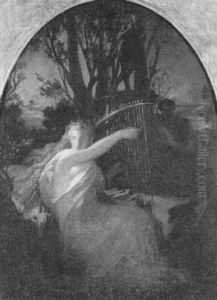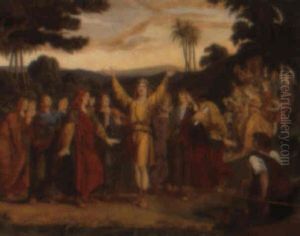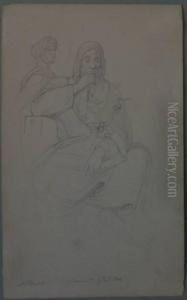Julius Naue Paintings
Julius Naue was a German painter and sculptor born on August 18, 1835, in Munich, Germany. He was a notable figure in the late 19th-century German art scene. Naue initially trained as a sculptor under Ludwig Schwanthaler, a prominent Rococo and Neoclassical sculptor of the time. However, his interest soon shifted towards painting, and he studied at the Academy of Fine Arts Munich, which was a hub for aspiring artists in the region.
During his artistic career, Naue was influenced by the Nazarene movement, a group of early 19th-century Romantic painters who aimed to revive honesty and spirituality in Christian art. His work often reflected religious themes and was characterized by its fine detail, rich color, and incorporation of religious and mythological subjects. Despite these influences, Naue developed his own distinctive style that also showed an interest in realism and the natural world.
Naue's work was well received in his time, and he exhibited in various salons and art exhibitions. He was not only active as an artist but also contributed to the artistic community as a teacher, influencing a younger generation of artists. His legacy includes not only his religious and mythological paintings but also portraits and landscape paintings, which capture the beauty of the natural environment in southern Germany.
Julius Naue died on April 23, 1907, in Munich. Although he may not be as widely recognized today as some of his contemporaries, his work still offers valuable insights into the German art world of the late 19th century and provides a testament to the diverse artistic currents that flowed through European art at the time.


